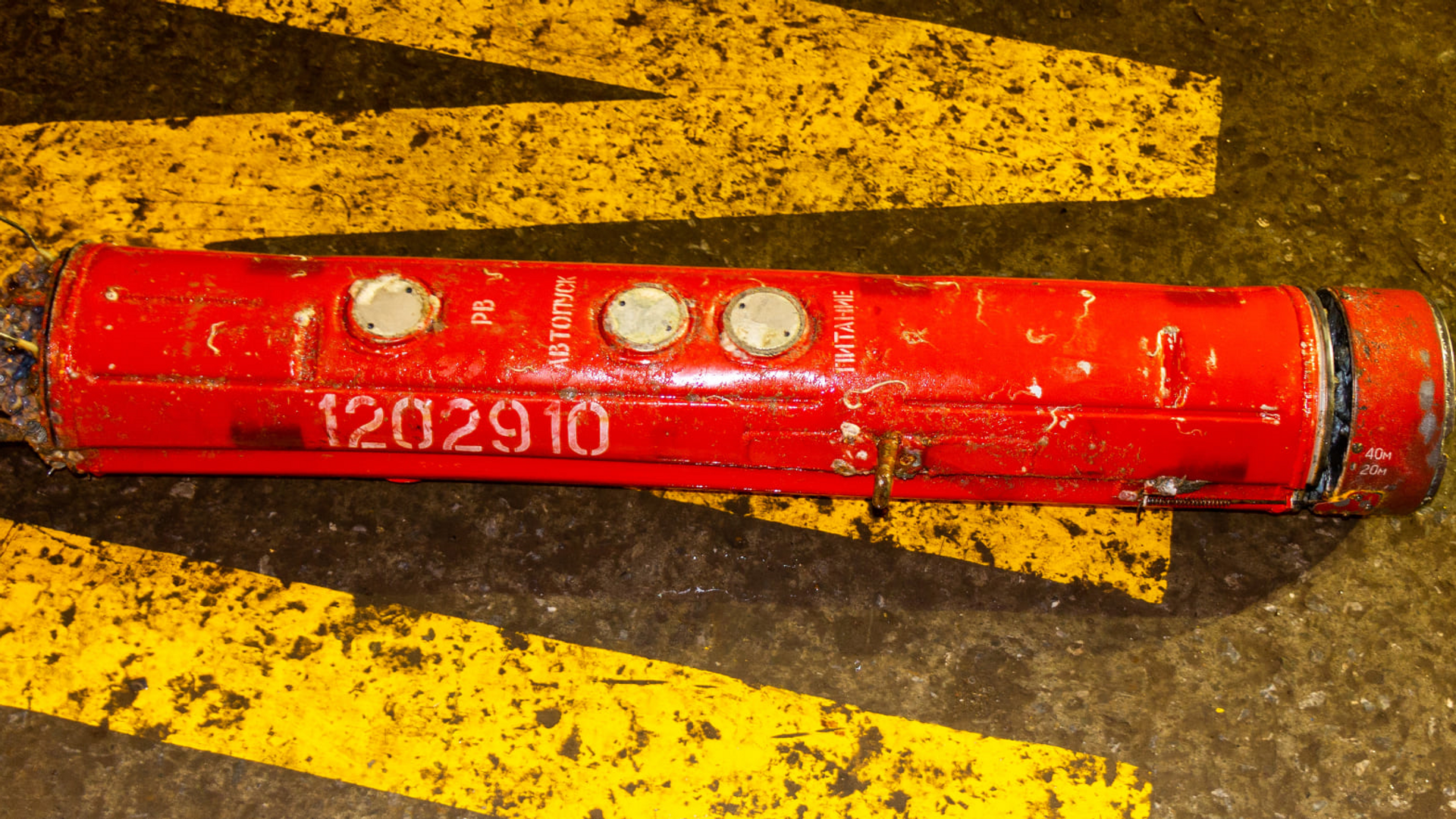https://sputnikglobe.com/20210930/catch-of-the-day-irish-fishermen-find-russian-military-grade-sonar-buoy-in-their-nets-1089557836.html
Catch of the Day: Irish Fishermen Find Russian Military-grade Sonar Buoy in Their Nets
Catch of the Day: Irish Fishermen Find Russian Military-grade Sonar Buoy in Their Nets
Sputnik International
The device, measuring about one-and-a-half meters in length, is painted bright orange and accented by white Cyrillic script. 30.09.2021, Sputnik International
2021-09-30T18:54+0000
2021-09-30T18:54+0000
2021-09-30T18:57+0000
trawler
anti-submarine
sonar
https://cdn1.img.sputnikglobe.com/img/07e5/09/1e/1089557791_102:0:1670:882_1920x0_80_0_0_72902451bd711d390049cb8fe4264702.png
Fishermen from the small fishing village of Union Hall, County Cork, southern Ireland have discovered what appears to be a Russian-made military-grade sonar buoy.The device was caught by the Áine Christina trawler on Monday, and the incident was first reported on by The Skipper, a local fishing news magazine.The buoy was found about 80 miles (about 129 km) off the coast.Russia removed this type of buoy from service in the mid-1990s, and most of them were reported to be consigned to warehouses or destroyed and buried at sea. The devices contain a hydrophone, a receiver, transmitter and antenna. The RGB-1A has a maximum range of about five and a half kilometers.Modern sub-hunting buoys used by the Russian military include a self-destruct feature in the form of a special membrane which dissolves after spending a certain period of time in the water, causing the buoys to sink. Earlier versions featured a small amount of explosive to accomplish the same task.It’s not clear how the buoy caught by the fishermen ended up so far from Russian waters, or why it appears to be in such good outward condition so many decades after the class of buoys was removed from service.The trawler’s catch sparked interest among The Skipper’s readers, most of them amused or intrigued by the mysterious find. “Interesting, not an everyday catch,” one user wrote. “The Russians again!!!” another joked. “Useless, never found our submarine,” another quipped. “Them sneaky rooskys,” another wrote. “Be careful the Spanish will want some of that quota,” another suggested.“Can you eat them?” one inquisitive user asked. “You’d have to boil them well,” a joker answered.
Sputnik International
feedback@sputniknews.com
+74956456601
MIA „Rossiya Segodnya“
2021
News
en_EN
Sputnik International
feedback@sputniknews.com
+74956456601
MIA „Rossiya Segodnya“
Sputnik International
feedback@sputniknews.com
+74956456601
MIA „Rossiya Segodnya“
trawler, anti-submarine, sonar
trawler, anti-submarine, sonar
Catch of the Day: Irish Fishermen Find Russian Military-grade Sonar Buoy in Their Nets
18:54 GMT 30.09.2021 (Updated: 18:57 GMT 30.09.2021) The device, measuring about one-and-a-half meters in length, is painted bright orange and accented by white Cyrillic script.
Fishermen from the small fishing village of Union Hall, County Cork, southern Ireland have discovered what appears to be a Russian-made military-grade sonar buoy.
The device was caught by the Áine Christina trawler on Monday, and the incident was first reported on by
The Skipper, a local fishing news magazine.
The buoy was found about 80 miles (about 129 km) off the coast.
Judging by the photographs provided by The Skipper, the device in question looks like an RGB-1A, a passive hydroacoustic buoy once used by the Russian Navy which operates by being dropped from an submarine-hunting aircraft (typically Tu-142F maritime patrol aircraft) in a set pattern to triangulate the hunted vessel’s position underwater.
Russia removed this type of buoy from service in the mid-1990s, and most of them were reported to be consigned to warehouses or destroyed and buried at sea. The devices contain a hydrophone, a receiver, transmitter and antenna. The RGB-1A has a maximum range of about five and a half kilometers.
Modern sub-hunting buoys used by the Russian military include a self-destruct feature in the form of a special membrane which dissolves after spending a certain period of time in the water, causing the buoys to sink. Earlier versions featured a small amount of explosive to accomplish the same task.
It’s not clear how the buoy caught by the fishermen ended up so far from Russian waters, or why it appears to be in such good outward condition so many decades after the class of buoys was removed from service.
The trawler’s catch sparked interest among The Skipper’s readers, most of them amused or intrigued by the mysterious find. “Interesting, not an everyday catch,” one user wrote. “The Russians again!!!” another joked. “Useless, never found our submarine,” another quipped. “Them sneaky rooskys,” another wrote. “Be careful the Spanish will want some of that quota,” another suggested.
“Can you eat them?” one inquisitive user asked. “You’d have to boil them well,” a joker answered.

